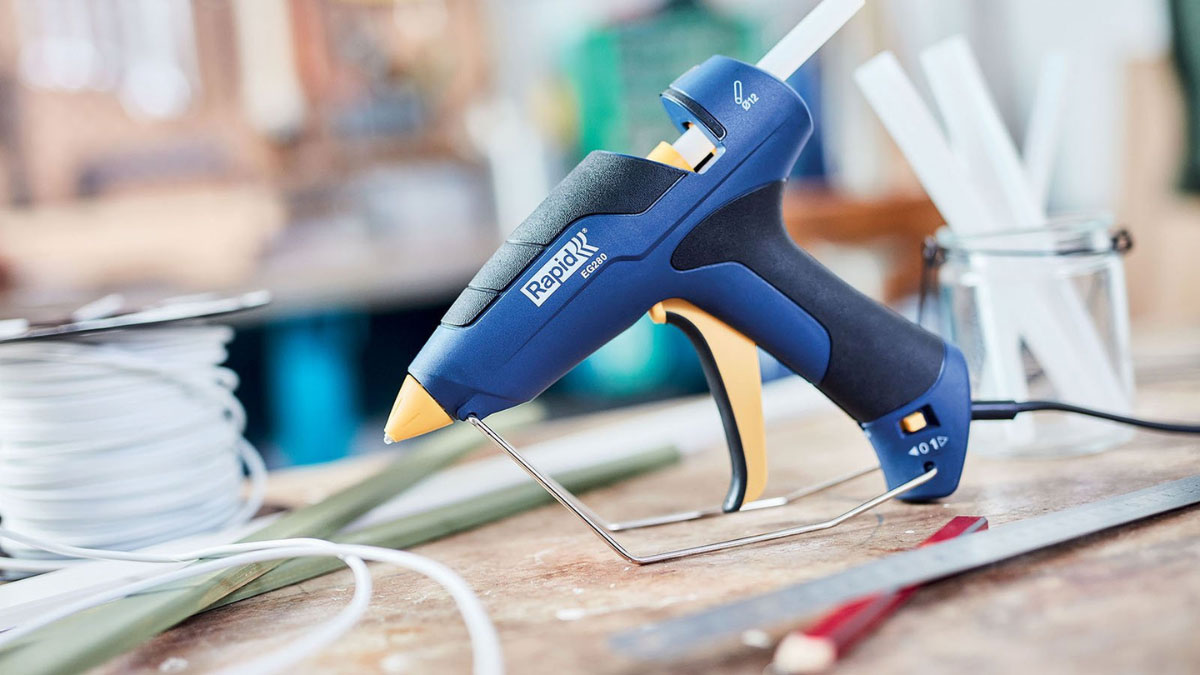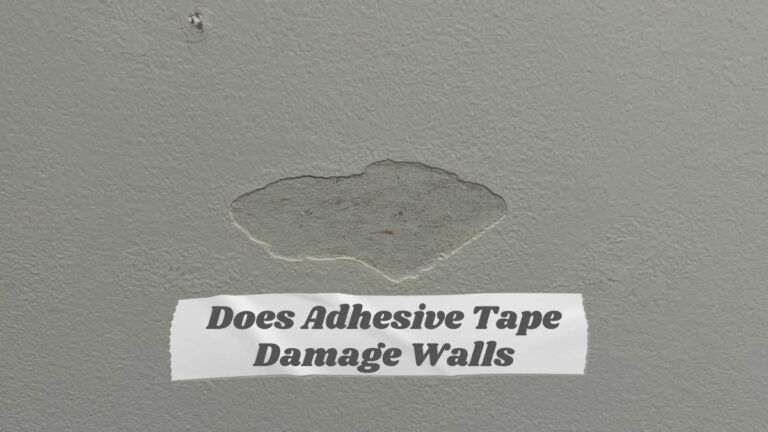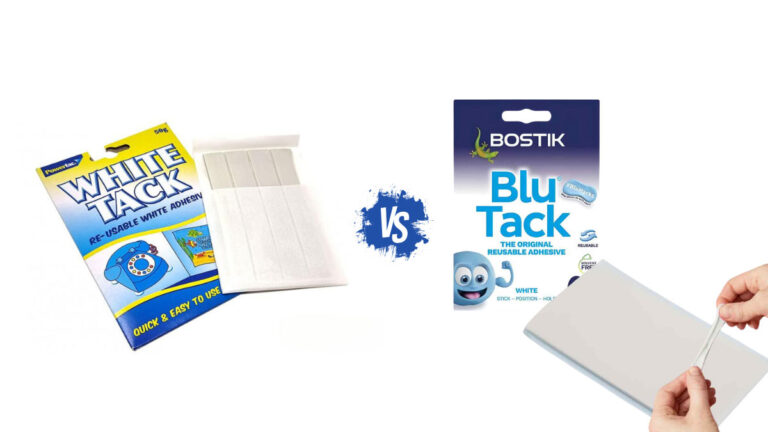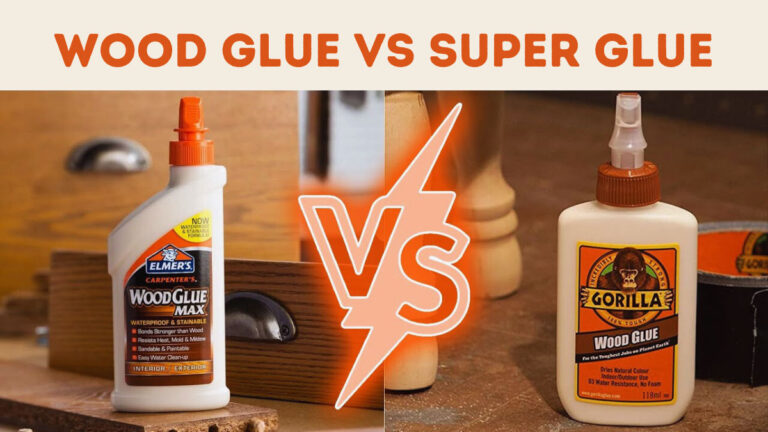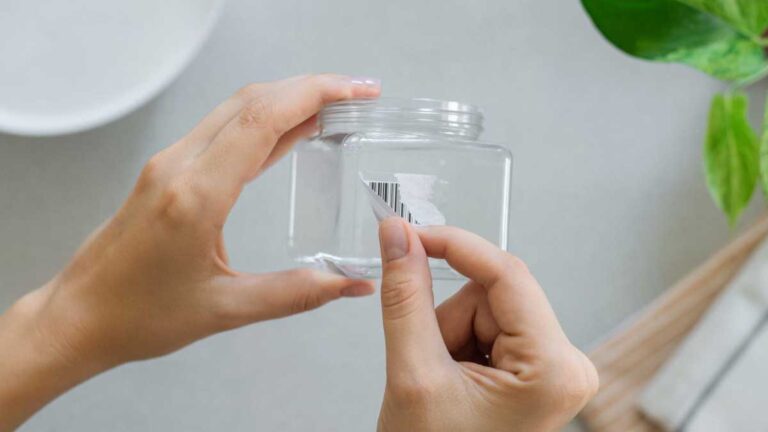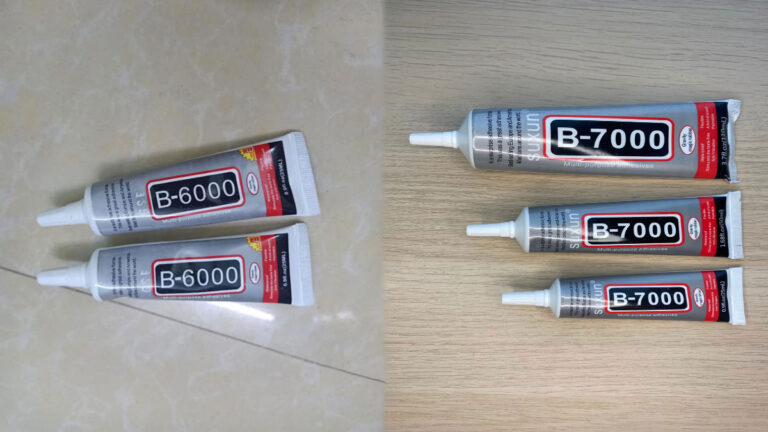What Glue Sticks Plastic to Plastic: Ultimate DIY Guide
When it comes to DIY projects or repairs involving plastic, finding the right adhesive can be a game-changer. Not all glues are created equal, and using the wrong type can lead to weak bonds and frustration. So, what’s the best glue to stick plastic to plastic?
Understanding the types of plastic you’re working with is crucial. Different plastics have varying chemical compositions, which means some adhesives work better than others. Whether you’re fixing a broken toy or assembling a model, knowing which glue to use ensures a strong, lasting bond. Let’s jump into the best options to make your next plastic project a success.
Key Takeaways
- Understand the Type of Plastic: Different plastics have varying chemical compositions, affecting adhesive performance. Identifying your plastic type ensures selecting the best glue for a strong bond.
- Select the Right Adhesive: Popular adhesives for plastic include structural adhesives, cyanoacrylate (super glue), and hot melt adhesives. Each has specific use cases and strengths.
- Consider Environmental Conditions: Adhesive performance can be affected by temperature, humidity, and UV exposure. Select adhesives that are suitable for the environmental conditions of your project.
- Prepare Surfaces Properly: Clean and dry plastic surfaces before applying glue. Roughening smooth surfaces with sandpaper or scuff pads can significantly improve adhesion.
- Follow Proper Application Techniques: Apply the right amount of glue, use clamping for even pressure, and allow adequate curing time according to manufacturer guidelines to ensure durable bonds.
Understanding Glue Types for Plastic
Choosing the right adhesive for plastic-to-plastic bonds is crucial. Different adhesives offer varying strengths, setting times, and compatibility with plastic types.
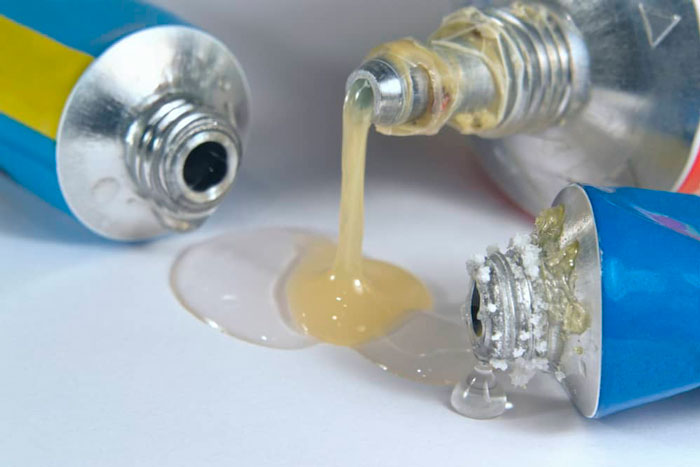
Structural Adhesives
Structural Adhesives are highly effective for bonding plastics, offering strong and durable joins.
- Two-Part Epoxies: Known for their high-strength bonds, these adhesives are commonly used in industrial and construction settings.
- Loctite Plastic Bonder: A two-part cyanoacrylate adhesive that bonds polycarbonate, acrylic, and nylon, setting in seconds and drying clear.
Cyanoacrylate (Super Glue)
Cyanoacrylate, or Super Glue, is a fast-setting adhesive suitable for various plastics.
- Pros:
- Quick setting time
- Transparent finish
- Cons:
- Variable effectiveness depending on the plastic type
Hot Melt Adhesives
Hot Melt Adhesives provide a good bond for certain types of plastics when used correctly.
- Features:
- Fast setting time
- Suitable for porous and non-porous plastics
- Requires a hot glue gun for application
| Adhesive Type | Strength | Setting Time | Best For | Special Notes |
|---|---|---|---|---|
| Structural Adhesives | High | Minutes to Hours | Industrial and construction uses | Durable and long-lasting |
| Cyanoacrylate | Moderate to High | Seconds | Quick repairs, general use | Not always effective on all plastic types |
| Hot Melt Adhesives | Moderate | Seconds to Minutes | Craft projects, quick fixes | Requires hot glue gun for application |
Choosing the right adhesive ensures strong, lasting bonds. Consider the plastic type and project requirements when making your selection.
Factors to Consider When Choosing Glue for Plastic
Choosing the right glue is crucial for successful plastic-to-plastic bonding. Various factors, such as the type of plastic, environmental conditions, and bond strength requirements, influence your decision. Understanding these can help you make the best choice for your specific project.
Type of Plastic
Different plastics require different adhesives. Here’s a breakdown:
-
Polyethylene (PE) and Polypropylene (PP):
- Characteristics: Smooth, non-absorbent surfaces make them challenging to bond.
- Recommended Adhesives: Hot melt glue sticks designed for PE and PP, such as Surebonder 739, offer better adhesion.
-
Polyvinyl Chloride (PVC) and Polyethylene Terephthalate (PET):
- Characteristics: Commonly used in various applications, these plastics require strong bonding solutions.
- Recommended Adhesives: SuperTAC 500 Plastic Bonding Hot Melt Sticks work well with PVC, PE, and PET.
-
Polycarbonate, Acrylic, Nylon, Mylar, Delrin:
- Characteristics: These plastics need adhesives that provide strong, impact-resistant bonds.
- Recommended Adhesives: Two-part cyanoacrylate adhesives like Loctite Plastic Bonder ensure sturdy joins.
Environmental Conditions
Environmental factors, such as temperature and humidity, affect adhesive performance. Consider the following:
-
Temperature Range:
- Cold Environments: Some adhesives become brittle and lose effectiveness in low temperatures.
- Hot Environments: Heat-resistant adhesives are necessary for applications exposed to high temperatures.
-
Humidity:
- High Humidity: Certain adhesives weaken when exposed to moisture. Use waterproof or moisture-resistant options like marine-grade epoxy for such conditions.
-
UV Exposure:
- Outdoor Projects: UV-resistant adhesives like UV-curable epoxies prevent degradation when exposed to sunlight.
Bond Strength Requirements
The strength of the bond is critical for the durability of your project. Evaluate these aspects:
-
Shear Strength:
- Definition: The force required to slide one layer of plastic over another.
- Importance: Higher shear strength ensures the bond can withstand lateral forces.
-
Tensile Strength:
- Definition: The maximum stress the adhesive can endure when being stretched.
- Importance: Essential for applications where the bonded plastics are under tension.
-
Impact Resistance:
- Definition: The ability of the adhesive to absorb energy and resist shocks.
- Importance: Vital for objects subjected to sudden impacts or vibrations.
| Plastic Type | Characteristics | Recommended Adhesive |
|---|---|---|
| Polyethylene (PE), PP | Smooth, non-absorbent surfaces | Surebonder 739 Hot Melt Glue Sticks |
| Polyvinyl Chloride (PVC), PET | Common in various applications, requires strong bonds | SuperTAC 500 Plastic Bonding Hot Melt Sticks |
| Polycarbonate, Acrylic, Nylon, Mylar, Delrin | Needs strong, impact-resistant bonds | Loctite Plastic Bonder (Two-part Cyanoacrylate) |
| Environmental Condition | Requirements | Recommended Adhesive |
|---|---|---|
| Cold Environments | Brittle adhesives in low temperatures | Cold-resistant Hot Melt |
| Hot Environments | Heat-resistant bonding needed | High-temperature Epoxies |
| High Humidity | Moisture resistance | Marine-grade Epoxy |
| UV Exposure | Prevent degradation | UV-curable Epoxies |
Understanding these factors ensures you select the most suitable adhesive for your plastic-to-plastic bonding project, guaranteeing strong and lasting results. Heading into your next project armed with this knowledge, make sure to match the adhesive to the specific type of plastic, environmental conditions, and bond strength requirements.
Surface Preparation for Gluing Plastic
Proper surface preparation is crucial for ensuring a strong bond between plastic pieces. Inadequate preparation can lead to weak bonds and failed projects. This section provides detailed instructions on cleaning and drying surfaces, as well as roughening the plastic to ensure optimal adhesion.
Cleaning and Drying
Before applying any adhesive, thoroughly clean and dry the plastic surfaces:
- Remove Contaminants: Use soap and water to wash away dirt, grease, and oil stains. For stubborn residues, use isopropyl alcohol or a plastic-safe cleaner.
- Rinse and Dry: Rinse the parts with clean water after washing. Dry them completely with a lint-free cloth to prevent any residue or moisture from interfering with the adhesive.
- Check Surface: Examine the cleaned surface to ensure it’s free from dust, oil, or any contaminants that might weaken the bond.
Roughening the Surface
Certain plastics resist adhesion due to their smooth, non-porous surfaces. Roughening the plastic can significantly improve the adhesive bond:
- Sandpaper: Use fine-grit sandpaper (around 120 to 220 grit) to gently abrade the surface. This creates micro-grooves for the adhesive to grip.
- Scuff Pads: For more delicate plastics, a scuff pad can be used as an alternative to sandpaper. It provides a similar roughening effect without potentially damaging the surface.
- Visual Inspection: After roughening, visually inspect the surface to ensure it has a uniform texture. Wipe away any dust with a clean, dry cloth.
| Tool | Purpose | Suitable for |
|---|---|---|
| Soap & Water | Basic cleaning | All plastic types |
| Isopropyl Alcohol | Removing grease and oil | Most plastics |
| Fine-Grit Sandpaper | Creating a rough surface | Harder plastics (ABS, PVC) |
| Scuff Pads | Gentle abrasion | Softer plastics (polyethylene) |
- Isopropyl Alcohol: A solvent used to clean and remove oil and grease.
- Fine-Grit Sandpaper: Sandpaper with a grit size of 120 to 220 used for light abrasion.
- Scuff Pads: Non-woven abrasive pads used for gently roughening surfaces.
Prepare the surfaces correctly by following these steps, optimizing the adhesion for your plastic projects. This ensures a durable and long-lasting bond.
Recommended Glues for Different Plastics
Selecting the right adhesive depends on the type of plastic you’re working with. Using the correct glue ensures a strong and durable bond.
PVC (Polyvinyl Chloride)
- Loctite Vinyl, Fabric & Plastic Flexible Adhesive: This clear adhesive works well on flexible plastics like PVC. It’s waterproof, dries clear, and isn’t affected by UV exposure.
PE (Polyethylene) and HDPE (High-Density Polyethylene)
- Loctite Plastics Bonding System: A two-part cyanoacrylate adhesive suitable for hard plastics such as polyethylene. It provides a strong, water-resistant bond and sets quickly.
- 3M™ Hot Melt Adhesive Glue Stick for Plastic 3764: This hot melt adhesive works well on polyethylene and polypropylene, though it’s best to test it for optimal results.
- Loctite All-Plastic Super Glue: This glue is designed for hard plastics like PET. It provides a robust bond, setting quickly and offering reasonable resistance to water.
| Plastic Type | Recommended Adhesive | Notable Features |
|---|---|---|
| PVC | Loctite Vinyl, Fabric & Plastic Flexible Adhesive | Waterproof, UV-resistant, dries clear |
| PE & HDPE | Loctite Plastics Bonding System | Two-part, quick-setting, strong bond |
| PE & HDPE | 3M™ Hot Melt Adhesive Glue Stick for Plastic 3764 | Suitable for testing adhesion |
| PET | Loctite All-Plastic Super Glue | Quick-setting, water-resistant |
Properly prepare surfaces to ensure the best bond. Clean and dry surfaces, then roughen them with sandpaper. Choosing the right glue and preparing surfaces well provides strong, lasting bonds for your plastic projects.
Tips for Successful Plastic Bonding
Achieving strong plastic-to-plastic bonds involves more than just choosing the right adhesive. Follow these tips to ensure your projects hold up.
Proper Application Techniques
Proper application techniques enhance bonding efficiency and durability. Here’s how to get the most out of your adhesive:
- Clean the Surface: Dirt, grease, and oils can weaken the bond. Use soap and water or isopropyl alcohol to clean both plastic surfaces thoroughly. Dry them completely before applying glue.
- Roughen the Surface: Smooth plastic surfaces can be challenging for adhesives to grip. Use fine-grit sandpaper (around 120-150 grit) or a scuff pad to create tiny grooves on the bonding surface. This process, known as abrasion, increases the surface area and improves adhesive contact.
- Use the Right Amount of Glue: Too much adhesive can weaken the bond, while too little may not hold. Apply a thin, even layer on one of the surfaces. Avoid overflow, which can cause a messy finish and reduce adhesion strength.
- Clamp the Pieces Together: For optimal bonding, hold the pieces together using clamps or heavy objects. This step ensures pressure is applied evenly across the joint, expelling air bubbles and enhancing adhesion.
Allowing Adequate Curing Time
Curing time is critical for the glue to reach its full strength. Here’s what you need to know:
- Follow Manufacturer Guidelines: Different adhesives have varying curing times. Check the product instructions for the recommended duration. Some epoxies may take 24 hours, while cyanoacrylates (super glues) can bond in seconds but benefit from longer curing.
- Avoid Disturbing the Bond: Any movement during curing can weaken or break the bond. Allow the adhesive to set undisturbed for the full recommended time.
- Consider Environmental Factors: Temperature and humidity impact curing times. Higher temperatures generally speed up curing, while high humidity levels can either help or hinder depending on the adhesive type. Ensure you work in a stable environment for consistent results.
| Adhesive Type | Plastic Type | Curing Time | Application Notes |
|---|---|---|---|
| Cyanoacrylate (CA) | Polyethylene, PP | 5-60 seconds | Use activator for faster bonding, sensitive to smooth surfaces |
| Epoxy (Loctite Plastics Bonding System) | Polycarbonate, Acrylic | 24 hours | Requires precise mixing, very strong bond |
| Hot Melt Glue (Surebonder 739) | PE, PP | 1-2 minutes | Best used with hot glue gun, limited by aesthetic appeal |
Make sure the choice of adhesive aligns with the type of plastic, its environmental conditions, and bond strength requirements. Proper surface preparation and adhering to recommended curing times will ensure strong, lasting plastic bonds.
Conclusion
Choosing the right glue for plastic-to-plastic bonding is crucial for achieving strong and durable results. By understanding the type of plastic you’re working with and the environmental conditions, you can select the most suitable adhesive. Proper surface preparation, including cleaning and roughening, enhances adhesion and ensures a successful bond.
Remember to follow manufacturer guidelines for application and curing times. Whether you’re using structural adhesives, cyanoacrylate, or hot melt adhesives, matching the adhesive to your specific needs will lead to optimal outcomes. With these tips and recommendations, you’re well-equipped to tackle any plastic bonding project confidently.
Frequently Asked Questions
Does Gorilla Glue work on plastic to plastic?
Yes, Gorilla Super Glue can bond plastic to plastic. It is designed to work well with a variety of materials, including most plastics. However, it is important to ensure proper surface preparation for the best results.
Is Mighty Bond good for plastic?
Mighty Bond Extreme is versatile and works on many materials, including most plastics. However, it does not work well with polypropylene and polyethylene plastics.
How to stick two pieces of plastic together?
For strong plastic bonds, consider using an epoxy adhesive. Cyanoacrylate glue (Super Glue) can also work well, especially for smaller projects. Roughening the surfaces before application helps ensure a stronger bond.
How do you glue plastic to plastic?
To glue plastic to plastic effectively, use plastic cement, cyanoacrylate (Super Glue), or epoxy adhesives. Prior to application, clean and roughen the surfaces to enhance adhesion.
What is the strongest super glue for plastic?
Loctite Super Glue All Plastics is one of the strongest and most versatile adhesives for plastic. It works on a wide variety of plastics, including challenging types like polyethylene and polypropylene.

